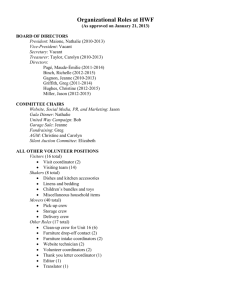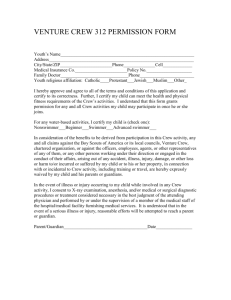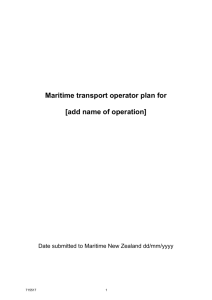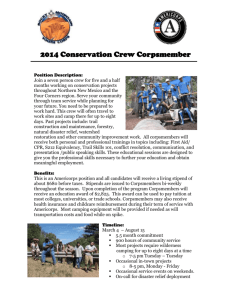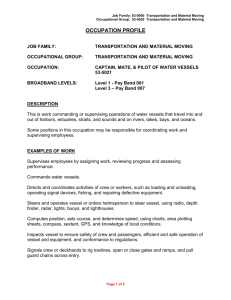Document 11071388
advertisement
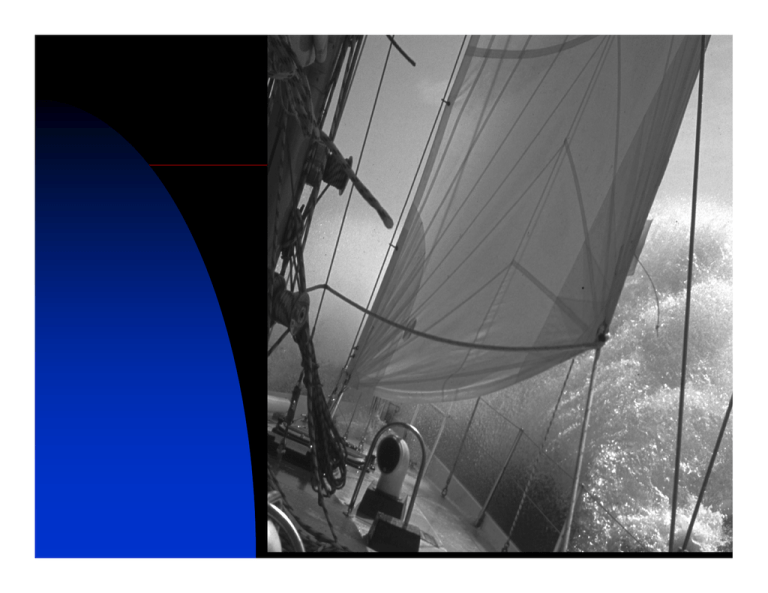
Crew overboard presented byRalph Naranjo preventing a crew overboard incident Your seamanship skills The readiness of your vessel Keeping pace with the conditions at hand What keeps you on board Seafaring agility Well designed decks Good non-skid Hand holds, toe rails and lifelines Safety gear Harness Jack lines Attachment PFD When to use it Both a skipper and crew decision How reliable is your safety equipment? PFD/harness maintenance Check for leaks Acclimate to use Don and doff Inflation system Check CO2 cylinder Bobbin Inflator Risk level Wind velocity Sea state Composition of crew Vessel constraints Day/night skipper’s call – individual responsibility ISAF guidelines Storm Trysail Club research Blue Yankee skipper’s advice Snow Lion crew loss Who takes the lead Call out “man overboard” Throw floatation Deploy equipment? Execute Quickstop Assign a lookout Press the MOB button Pan-Pan message VHF Prepare heaving line Ready hoist or recovery gear Oceanic constraints Higher risk in heavy weather Harness usage Check jacklines Clipping on and off Beware of the unexpected Not a reality show Crew have all been trained Understand gear and tactics Quickstop • tack boat • leave jib backed • bare off downwind • centerline main • jibe • round up toward victim Unexpected consequences reaction vs. reflex response emotional factor Off - the - wind Victim recovery Secure to boat Hoist or haul Treat injuries Monitor condition Safety precautions and sea state Lending Assistance 1.1 A boat or competitor shall give all possible help to any person or vessel in danger Evaluate situation Nature of problem Conditions aboard your own vessel Ability to render useful assistance Risk to your own crew Risk assessment Degree of peril Timeliness of response Potential for disaster Other vessels involved Decision making in extremis Do no harm Don’t inappropriately jeopardize your crew Build contingency plans Communicate Contact USCG Contact vessel in distress Reach agreement Explain your response Understanding chaos Fear, fatigue and failure Who’s in the crew Condition of those on board Agreement on rescue details Crew training and vessel preparation •Underway practice •Winter maintenance •Independent study •Formal training Sail America - Safety at Sea Seminar 0900 Man Overboard Recovery Ralph Naranjo 0945 The Damage Control Toolbox Steve D’Antonio 1030 Break 1045 Storm Sails and Handling Heavy weather 1130 ISAF Special Regulations 1200 Lunch 1300 Allsop The Weather Wise Sailor 1400 Liferaft Demo/ Liferaft Maintenance 1450 Marx Gear for the Grab Bag 1520 Communications / Search and Rescue 1545 Questions and Closing Remarks Ralph Naranjo Jim Steve D’Antonio Henry Ralph Naranjo
